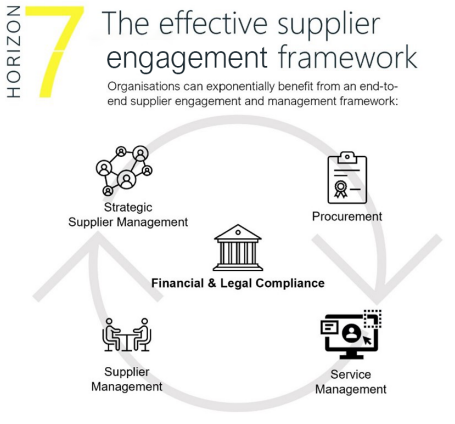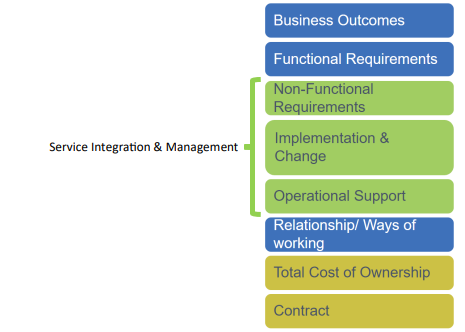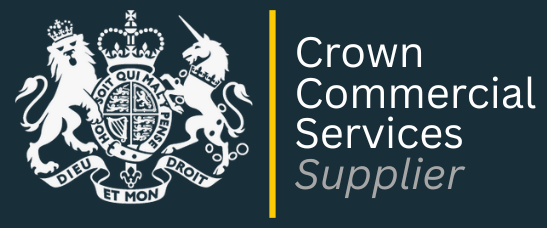Technology procurement & SIAM
TECHNOLOGY PROCUREMENT AND SIAM,
The often-overlooked critical relationship between technology procurement and SIAM.
It never ceases to amaze me how many organisations fail to recognise the importance of the Service Integration and Management model in their organisation when procuring new technology services and products. And sometimes it amazes me even more that organisations don’t have an effective SIAM model and operation.
Every technology purchase ultimately needs to plug into the organisations SIAM operation, without this operational integration, landing technology solutions effectively into your organisation will be like trying to plug your hair dryer into jelly – messy and ineffective.
We cannot expect technology services to run in isolation once we’ve bought them, and yet considering the ‘run’ needs of the solution is often forgotten during the procurement process and thrown over the wall at the IT Service Management function once bought.
So why do so many organisations fail to consider both the SIAM and target operating model that will receive the newly procured technology?
WHATS NEEDED IS AN EFFECTIVE UNDERSTANDING OF SIAM AND HOW TO INTEGRATE IT WITH TECHNOLOGY PROCUREMENT PROCESSES
An effective SIAM operating model is a recipe for success when it comes to integrating different sources of technology supply, whether that’s big service solutions which may have been outsourced like service desk or hosted managed services, SaaS services or software subscriptions – all technology products and services need a docking station to plug into.
Effectively considering your organisation’s SIAM model during procurement means understanding how your new product or service will be supported once the contract is signed, and impact the rest of your technology estate.
SIAM is an important assessment criterion for making your technology selection and shouldn’t be neglected compared to say, the lowest price. Good procurement should practically ‘road-test’ what living with your new product or service looks like, it goes beyond the SLA’s that can be negotiated and gets into ‘how’ the product or service will practically be supported in life.
WHY SHOULD WE CONSIDER SIAM REQUIREMENTS AS A KEY CRITERION – SAY COMPARED TO PRICE?
SIAM model requirements are often neglected in the key criteria for making technology procurement decisions, its not seen as important as other criteria like functionality and price for example which tend to have greater sponsorship in procurement, however, we always recommend to our clients that SIAM should be considered as a key category alongside other important evaluation criterion.
Key Evaluation Criterion including SIAM
There are four good reasons why SIAM is so important to technology procurement, so why are organisations continuing to neglect SIAM when it comes to technology procurement?

1. BENEFITS CONCIEVED FROM TECHNOLOGY PROCUREMENT CAN’T BE REALISED WITHOUT EFFECTIVE SIAM
No matter how fantastic the functionality, how effective the price, how transformational the technology, without effective integration with a good SIAM model the benefits are at risk of unravelling if the new product or service cannot be effectively supported or integrated with the rest of the technology estate.
Leaving the exercise to understand how this integration will happen until after the procurement process is a BIG mistake, involving the SIAM professionals in your organisation too late risks having to bootstrap the new service into your organisation with the inevitable ‘clunky’ sub-optimal service.
By including and testing SIAM requirements during procurement, the end-to-end run model including its support can be properly understood, without it, the benefits are at risk if the product, or solution cannot be properly supported, or run effectively.
2. TECHNOLOGY RISKS CAN BE HIDDEN IF SIAM IS NOT PROPERLY CONSIDERED BEFORE PURCHASE
By focusing only on the functional benefits, price and technology opportunities, we run the risk of not properly evaluating the non-functional requirements. Big ticket items like security standards and data protection are often considered, but the capability of the supplier to support the product, or service can be missed when SIAM is not considered up front.
Asking yourselves (and the suppliers) SIAM questions can be very revealing about how the product or service is architected – occasionally revealing some nasties you’ll be happy to have the opportunity to consider before selecting your preferred option.

3. SERVICE LEVELS ALONE ARE NOT ENOUGH TO ENSURE PROPER SUPPORT
Relying on service levels alone (even a good set) is not sufficient to test that your new product or service will meet the SIAM needs of your organisation, SLA’s alone will not compensate your organisation when your product or service is unavailable, or instable, or you have no idea who to talk to for support at the supplier.
What is required is a thorough understanding of the makeup of the supplier organisation (assuming we’re not talking Microsoft of Amazon here), and how they run their SIAM processes. The greater the complexity of the service the deeper you should dig on how this is designed and operated.
Nevertheless, a good set of SLAs is still important and those should be carefully examined and the implications calculated to ensure that handoffs are properly handled and restore time is properly understood.
4. SIAM FACILITATES THE INTEGRATION WITH OTHER SERVICES AND IDENTIFIES DEPENDANCIES
Its unusual that a technology product or service stands alone, and has no touch points, dependencies on, or relationship with other products and or services. Understanding those upfront are critical since the knock-on effect of the purchase may be changes to scope, scale or support elsewhere. SIAM needs to understand this impact during the procurement process and provide the impact assessment for each option since each may be different in its demands of the existing technology estate.
Getting this right will mean no surprises for the organisation or your other third parties, which are sometimes only discovered when the first incident occurs, which we all know delays resolutions and hits the internal and/or external customer satisfaction hard.
WHATS IN IT FOR ME? THE BENEFITS OF BETTER INTEGRATION BETWEEN PROCUREMENT AND SIAM
Practice tells us that effective inclusion of SIAM during the procurement process gives exponential benefit to realising results from technology procurement and successful integration with the existing and future planned technology estate.
One of the main issues we find is that many organisations simply don’t have a comprehensive and/or effective SIAM solution defined, this can make it difficult to include SIAM requirements into tech procurement, this is a critical problem to be solved in any organisation.

SO, WHAT DOES A GOOD SIAM MODEL LOOK LIKE AND HOW SHOULD IT BE INTEGRATED INTO PROCUREMENT?
A comprehensive SIAM model covers the end-to-end lifecycle management of technology and thinks about the IT products and services from a supply and demand perspective. Good SIAM ties together the disparate parts of technology via common practice, language, process, and tools to present a single/seamless engagement for all customers (internal and external). Done well, it helps the organisation to achieve its technology and business goals;
• Achieves standard processes, tools and governance processes
• Manages competing priorities and demands on resources
• Builds an effective service eco-system, focussed on business objectives
• Builds accountability and responsibility for end-to-end service
• Flexibility and scalability of service/resourcing Integrating niche demand quickly and effectively • Transparency of the cost (TCO), Return on Investment (ROI) and quality of the delivered service • Accountability for end-to-end controls (e.g. legal, regulatory and risk)
• Ensuring robust financial management to optimise cost
• Supplier collaboration to ensure service delivery optimisation
• Focus on service management, ensuring incentivisation on quality of end-to-end service
• Embedding change to ensure complete “adoption”

Integrating SIAM into procurement processes is relatively straightforward, provided SIAM is considered as a set of requirements that are effectively prioritised alongside other, more ‘popular’ requirements. The key though is that SIAM is able to effectively set out its stall of standards and processes as a set of clear requirements, these can then be integrated into the assessment criterion of the product or service. Simples
CONCLUDING REMARKS
Without the effective integration of SIAM as a set of requirements and as a stakeholder in the procurement of technology products and services, organisations are unlikely to realise the planned benefits, or worse, expose themselves to risk of failure of performance or support post procurement. Gaps and cracks often appear as soon as the service goes live (or tries to), when interdependencies with other technology and suppliers are identified, impacting the internal and/or external customers at the very outset.





